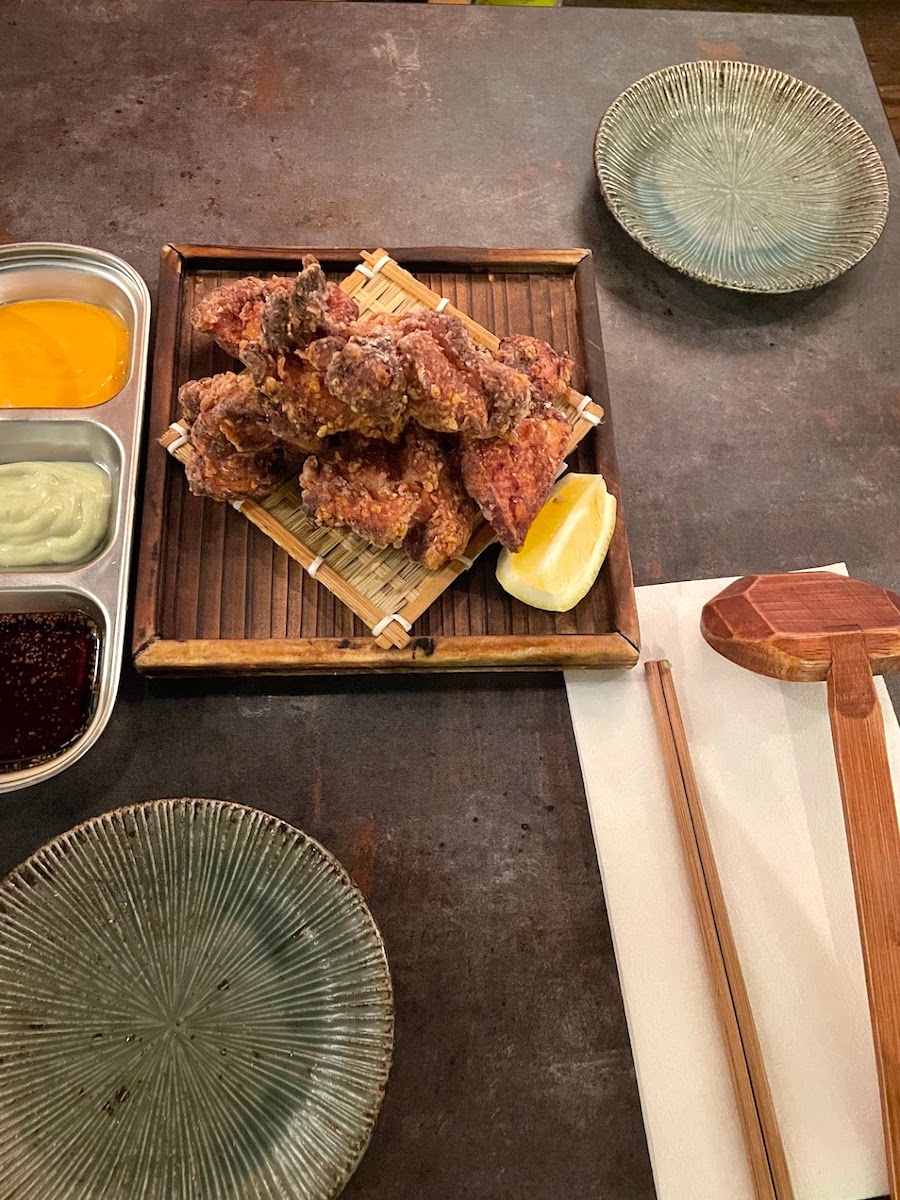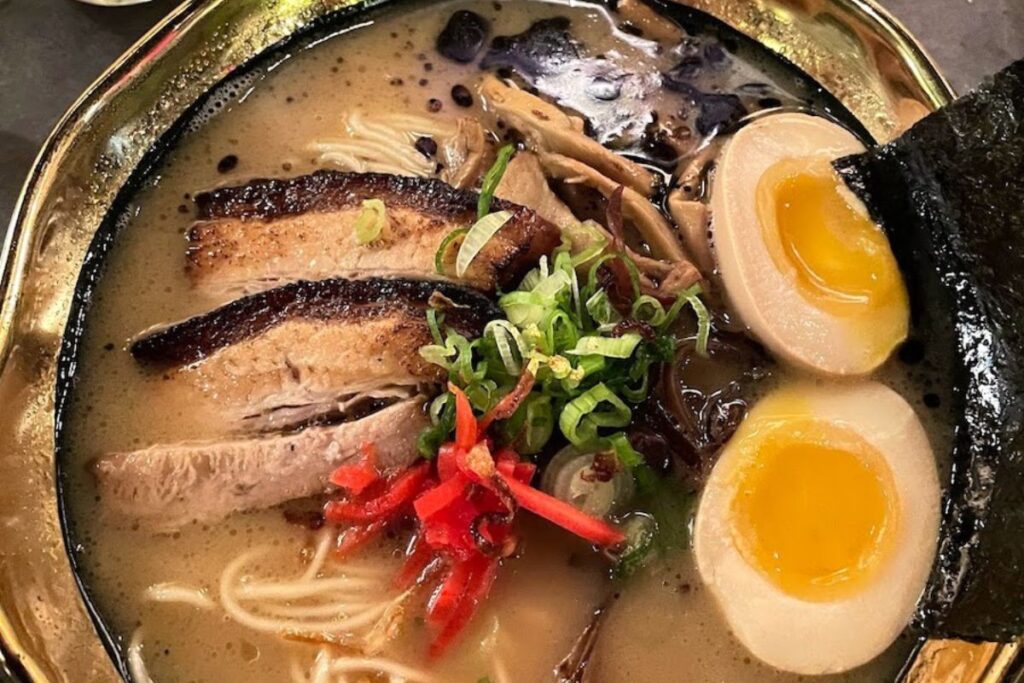There's something magical about Kin Ramen, you know? It's not just another bowl of noodles; it's an experience, a taste of tradition, and a comforting hug for your soul. Imagine sitting in a cozy little ramen shop in Japan, steam rising from a bowl filled with rich broth, perfectly cooked noodles, and an array of mouthwatering toppings. That’s Kin Ramen for you! Whether you’re a die-hard ramen enthusiast or a newcomer looking to dive into this culinary masterpiece, you're about to uncover why Kin Ramen has captured the hearts of foodies worldwide.
Kin Ramen isn’t just a dish—it’s a cultural phenomenon that transcends borders. This humble bowl of noodles has evolved over the years, adapting to local tastes while staying true to its Japanese roots. From the bustling streets of Tokyo to the quiet corners of your local ramen house, Kin Ramen is a testament to the artistry of Japanese cuisine. But what makes it so special? Stick around, because we’re about to take you on a journey through its history, flavors, and why it’s become a global sensation.
So, whether you're craving the comforting warmth of a tonkotsu broth or the bold flavors of miso ramen, Kin Ramen has something for everyone. This article will dive deep into everything you need to know about this iconic dish, from its origins to the best ways to enjoy it. Let’s get started!
Read also:Avalon Mira The Ultimate Guide To Your Dream Destination
Table of Contents
- The History of Kin Ramen
- Types of Kin Ramen
- Key Ingredients in Kin Ramen
- How to Prepare Kin Ramen
- Nutritional Value of Kin Ramen
- Top Places to Try Kin Ramen
- Customizing Your Kin Ramen
- Health Benefits of Kin Ramen
- Kin Ramen Festivals Around the World
- The Future of Kin Ramen
The History of Kin Ramen
Let’s rewind a bit and talk about how Kin Ramen came to be. Believe it or not, ramen as we know it today didn’t originate in Japan. It actually made its way from China during the late 19th century. Japanese chefs took this foreign dish and gave it their own twist, creating what we now call Kin Ramen. Over time, different regions in Japan developed their own unique styles, each with its own signature flavors and ingredients.
One of the most fascinating aspects of Kin Ramen’s history is how it evolved during post-war Japan. With limited resources, people had to get creative, and ramen became a staple food that could be made with simple ingredients. This adaptability is part of what makes Kin Ramen so beloved today. It’s not just about the taste; it’s about the story behind every bowl.
How Kin Ramen Became a Global Sensation
Fast forward to today, and Kin Ramen is everywhere. From high-end restaurants to street food stalls, it’s a dish that’s been embraced by food lovers all over the world. But how did it make such a huge leap from a local favorite to a global phenomenon? Well, it’s a combination of factors: the explosion of Japanese cuisine’s popularity, the rise of social media, and the fact that Kin Ramen just tastes damn good.
And let’s not forget about instant ramen! While it’s not exactly the same as Kin Ramen, instant ramen introduced millions of people to the concept of ramen and sparked curiosity about its authentic counterpart. That curiosity eventually led many to seek out the real deal, and Kin Ramen was there to deliver.
Types of Kin Ramen
Not all Kin Ramen is created equal. Depending on where you are in Japan—or even outside of Japan—you’ll find different types of ramen, each with its own distinct flavor profile. Here’s a quick rundown of some of the most popular varieties:
- Tonkotsu Ramen: Rich and creamy, this pork bone-based broth is a favorite among ramen lovers. It’s known for its thick consistency and deep flavor.
- Shoyu Ramen: A soy sauce-based broth that’s lighter and more savory, perfect for those who prefer a cleaner taste.
- Miso Ramen: Originating from Sapporo, this ramen uses a miso-based broth and is often packed with hearty flavors.
- Shio Ramen: A salt-based broth that’s simple yet incredibly flavorful, offering a delicate taste that’s perfect for purists.
Regional Variations of Kin Ramen
Japan’s diverse geography means that each region has its own take on Kin Ramen. For example, Hakata ramen from Fukuoka is known for its thin, straight noodles and rich tonkotsu broth, while Sapporo ramen is famous for its miso base and generous toppings. Even within a single city, you’ll find variations that reflect the chef’s personal style and local ingredients.
Read also:Don Cheto The Legendary Figure Who Shaped A Generation
And let’s not forget about international adaptations! From Korean-inspired ramen to fusion bowls that incorporate elements of Western cuisine, Kin Ramen continues to evolve, proving that it’s a dish that can adapt to any palate.
Key Ingredients in Kin Ramen
At the heart of every great bowl of Kin Ramen are its ingredients. While the exact recipe may vary depending on the type of ramen, there are a few staples that you’ll find in most bowls:
- Noodles: The star of the show! Kin Ramen noodles are typically made from wheat flour, water, salt, and kansui, a type of alkaline mineral water that gives them their unique texture.
- Broth: Whether it’s tonkotsu, shoyu, miso, or shio, the broth is what ties everything together. It’s often simmered for hours to extract maximum flavor.
- Toppings: From soft-boiled eggs to slices of chashu pork, toppings are what elevate Kin Ramen from a simple bowl of noodles to a culinary masterpiece.
Secret Ingredients in Kin Ramen
Every ramen chef has their own secret weapon when it comes to making the perfect bowl. Some add fermented bamboo shoots for a tangy kick, while others use dried fish flakes to enhance the umami flavor. The key is balance—each ingredient should complement the others, creating a harmonious taste experience.
And let’s not forget about the seasoning! Tare is a concentrated seasoning sauce that’s added to the broth to enhance its flavor. It’s often made with soy sauce, miso, or other ingredients, depending on the type of ramen being prepared.
How to Prepare Kin Ramen
Preparing Kin Ramen at home can seem intimidating, but with the right ingredients and a bit of practice, you can recreate the magic of a Japanese ramen shop in your own kitchen. Here’s a step-by-step guide to help you get started:
- Make the Broth: Start by simmering your chosen ingredients (pork bones, chicken, or vegetables) for several hours to create a rich, flavorful broth.
- Cook the Noodles: Boil the noodles according to the package instructions, but don’t overcook them—they should have a slight bite.
- Add the Toppings: Slice up your favorite toppings, such as chashu pork, soft-boiled eggs, and nori, and arrange them on top of the noodles.
- Season to Taste: Add a dash of tare or other seasonings to enhance the flavor of your broth.
Tips for Perfecting Your Kin Ramen
Here are a few tips to help you take your Kin Ramen game to the next level:
- Use high-quality ingredients whenever possible. Fresh vegetables and premium meats can make a huge difference in the final taste.
- Don’t skimp on the broth. A well-made broth is the foundation of a great bowl of ramen, so take your time and let it simmer.
- Experiment with different toppings and seasonings to find what works best for your palate.
Nutritional Value of Kin Ramen
While Kin Ramen is undeniably delicious, it’s important to consider its nutritional value, especially if you’re watching your diet. Depending on the type of ramen and the ingredients used, the calorie count can vary significantly. Here’s a rough breakdown of what you might find in a typical bowl:
- Calories: Around 500-800 calories per bowl, depending on the toppings and broth.
- Protein: Approximately 20-30 grams, mostly from the noodles and toppings.
- Carbohydrates: Around 60-80 grams, primarily from the noodles.
- Fat: 10-20 grams, depending on the type of broth and toppings.
Healthier Alternatives to Traditional Kin Ramen
If you’re looking to make your Kin Ramen a bit healthier, there are a few tweaks you can make:
- Use whole wheat or soba noodles instead of traditional ramen noodles for added fiber.
- Opt for a vegetable-based broth instead of a meat-based one to reduce saturated fat.
- Add plenty of fresh vegetables to boost the nutrient content of your bowl.
Top Places to Try Kin Ramen
Experiencing Kin Ramen in its birthplace is an unforgettable experience. Here are some of the best places to try it:
- Ippudo, Tokyo: Known for its creamy tonkotsu ramen, Ippudo is a must-visit for any ramen enthusiast.
- Ramen Street, Yokohama: Located in the Yokohama Ramen Museum, this street features seven different ramen shops, each offering its own unique take on the dish.
- Aji-Taza, Sapporo: Famous for its miso ramen, Aji-Taza is a local favorite that’s worth the visit.
International Ramen Spots
Can’t make it to Japan? No worries! There are plenty of great ramen spots around the world:
- Menya Musashi, New York: Known for its rich tonkotsu broth and perfectly cooked noodles, Menya Musashi is a NYC staple.
- Ramen Nagi, London: This London-based ramen shop offers a modern twist on traditional Japanese ramen, with creative toppings and flavors.
Customizing Your Kin Ramen
One of the best things about Kin Ramen is how customizable it is. Whether you prefer a spicier broth or extra toppings, most ramen shops will let you tailor your bowl to your liking. Here are a few ways to personalize your Kin Ramen:
- Spice Level: Add a dash of chili oil or spicy miso paste to kick things up a notch.
- Topping Choices: Go heavy on the corn and butter for a sweeter flavor, or stick with classic toppings like egg and pork.
- Noodle Texture: Some shops let you choose the firmness of your noodles, so don’t be afraid to experiment.
Getting Creative with Your Kin Ramen
Why stop at traditional toppings when you can get creative? Here are a few ideas to spice up your Kin Ramen:
- Try adding truffle oil for a luxurious twist.
- Throw in some kimchi for an extra kick of flavor.
- Experiment with different types of cheese, like parmesan or gouda, for a unique fusion experience.
Health Benefits of Kin Ramen
While Kin Ramen is often seen as a comfort food, it can actually offer some surprising health benefits when prepared correctly:
- Rich in Nutrients: A well-bal


